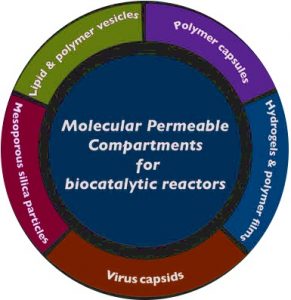
Drug delivery systems are engineered technologies to achieve a therapeutic effect by targeted delivery and/or controlled release of therapeutic agents. Such systems are important because they improve drug efficacy and help to decrease side effects.
The next-generation therapeutic platforms, concepts such as nanoreactors and nanofactories, are receiving high attention. Nanoreactors treat diseases through in situ production of therapeutic agents. They basically consist of vesicle‐encapsulated enzymes, and thus provide prodrug conversion to therapeutic agents rather than simple drug delivery.
Nanofactories, an advancement of this concept, combine the features of nanoreactors and delivery carriers.
Researchers, Nishimura and Akiyoshi, from Kyoto University discuss the required features of nanofactories and give an overview of current strategies for the design and fabrication of different types of nanoreactors. This section includes different types of vesicles: liposomes, polymer vesicles and capsules, mesoporous silica particles, viral capsids as well as hydrogels and polymer films. The respective advantages and shortcomings, as well as in-vivo applications of biocatalytic reactors in the treatment of several diseases: cancer, glaucoma, neuropathic pain, are also provided.
Future prospects and further progress of these promising nanosized (supra)molecular assemblies are outlined. The authors are convinced that the new class of therapeutics have great potential for treating many conditions. They also see the applicability not only in therapeutics but also for sensing and diagnosis. Nishimura and Akiyoshi expect that a more interdisciplinary community, from chemists to medical researchers, will be involved in tackling the many challenges in this field and will enable the development of new preclinical and clinical applications in near future.

















